November is the final month of fall so considered "late fall" in gardening language. It is a very beautiful month in our heartland location with the last of the fall foliage colors, last of the season's hardy flowers, and the most berry colorful month of the whole year. The colors of the tropics are gone with the intense summer sun as now we have the beautiful burnt reds, oranges, yellows and tans so illuminated by the sun's lower position in the sky.
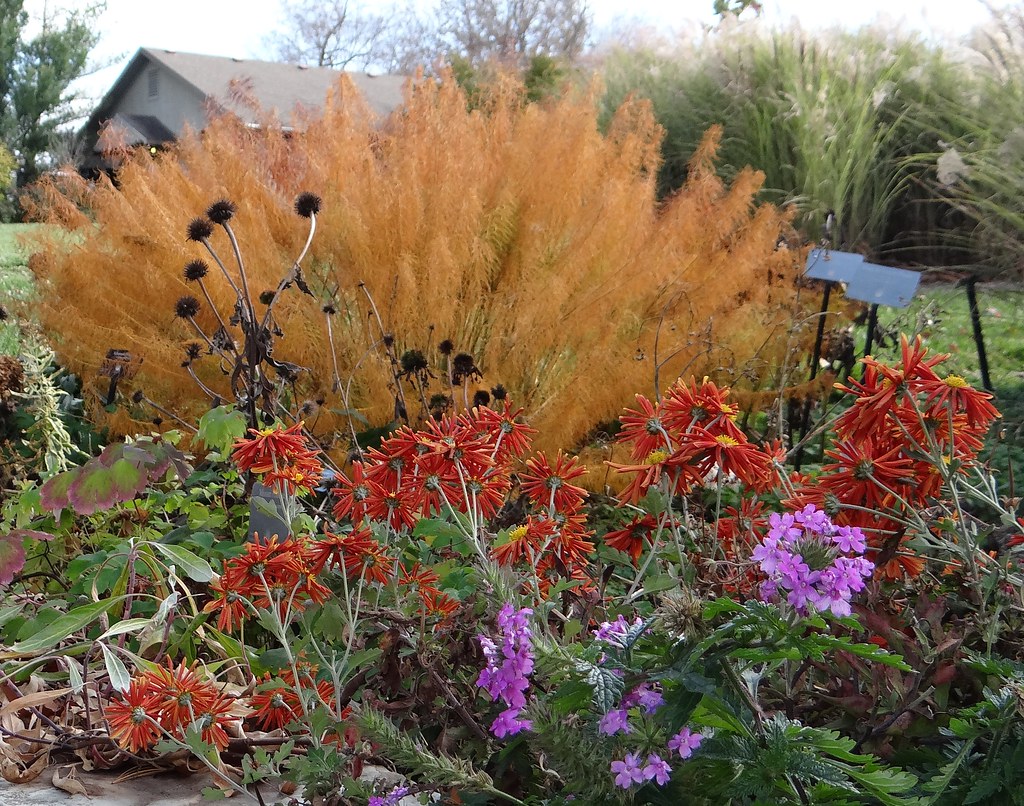
This image from the Perennial Garden epitomizes the season in the Perennial Garden. The burned yellow of the Arkansas Bluestar (Amsonia hubrichtii) in fall color as backdrop, dark orange full bloom of a seedling chrysanthemum (Dendranthema hybrids) and the contrasting lavender-purple flower of one of our longest blooming native plants: Rose Verbena (Verbena or Glandularia canadense). The seedheads of the Purple Coneflowers add even more to the composition as does the far backdrop of still green Miscanthus grasses and their silvery plumes that blend into the sky.
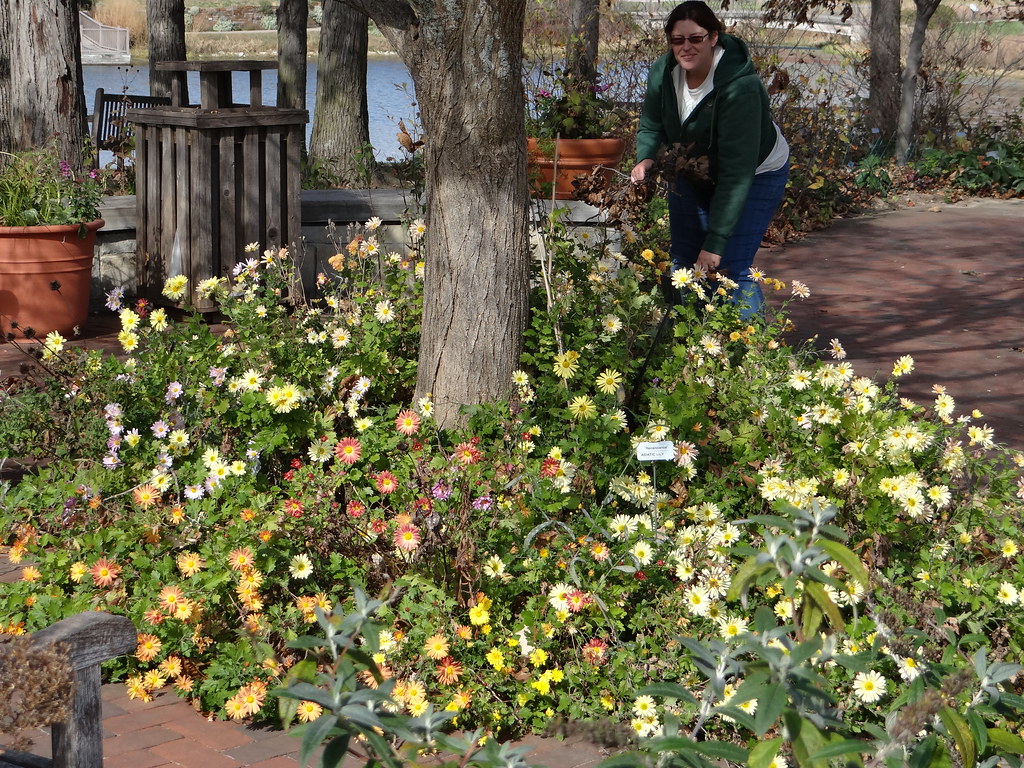
The Mums in the garden are at peak bloom now. Here Jennifer Barnes (Senior Gardener in the Perennial Garden) is picking up fallen twigs but we were admiring our ever-changing "menagerie" of mums. The light yellow mums are 'Ryan Gainey' mums given to us when Mr. Gainey (a well-known Atlanta gardener) brought them to us when he spoke at a prior Garden Symposium. They have hybridized with other mums in the garden to produce the kaleidoscope of colors.
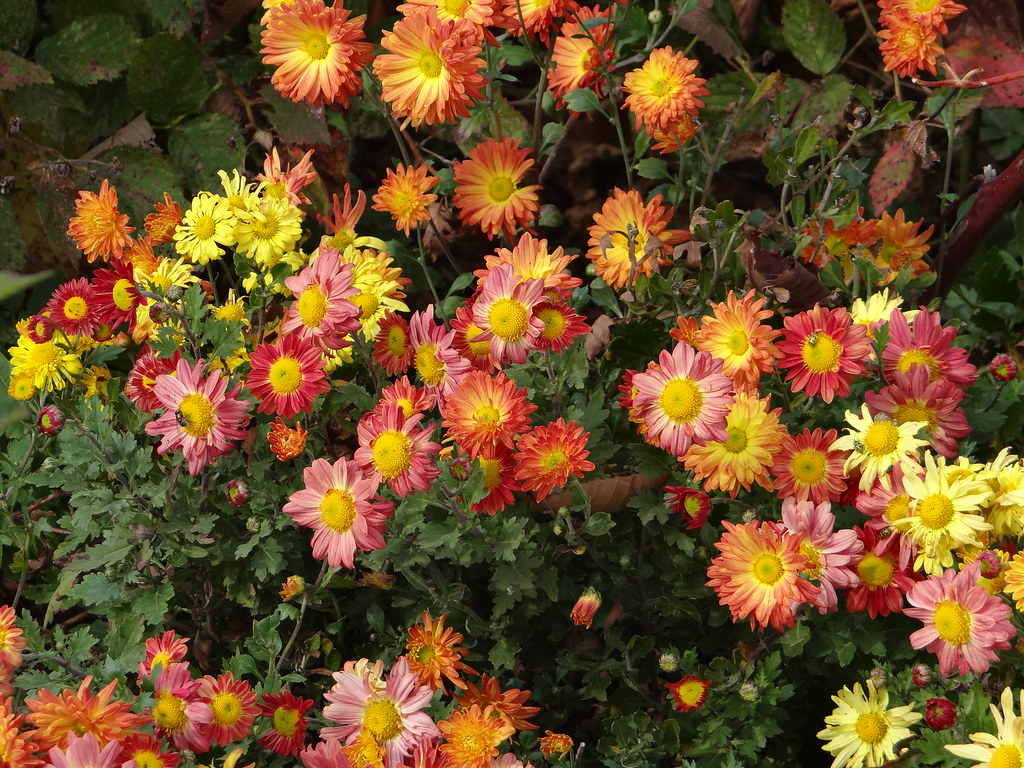
Our hybrid mums are from a group given to us by Jackie Goetz of Overland Park so we simply call them Jackie's Mums. Here is a picture of a planting of them from the Heartland Harvest Garden's vineyard. They have been self-sowing in her garden for over 20 years and now for almost a decade here at Powell Gardens. They are late fall bloomers and range in colors from white to yellow, orange, near red, pink, and lavender! I told Jackie her mums were promiscuous but she corrected me that the bees are just busy cross pollinating them!
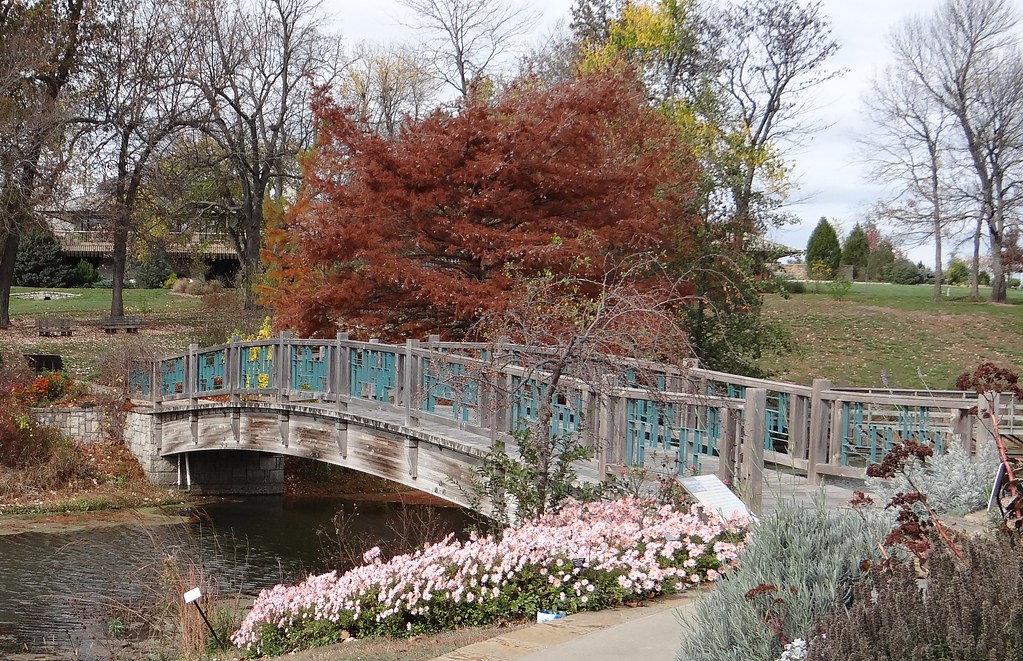
The soft pink mums in this picture are 'Hillside Sheffield Pink' mums which are also in this group and also contribute to our wonderful color array of seedling mums at the garden. This mass on the Island Garden creates a stunning composition now with the baldcypress in its rusty fall color.
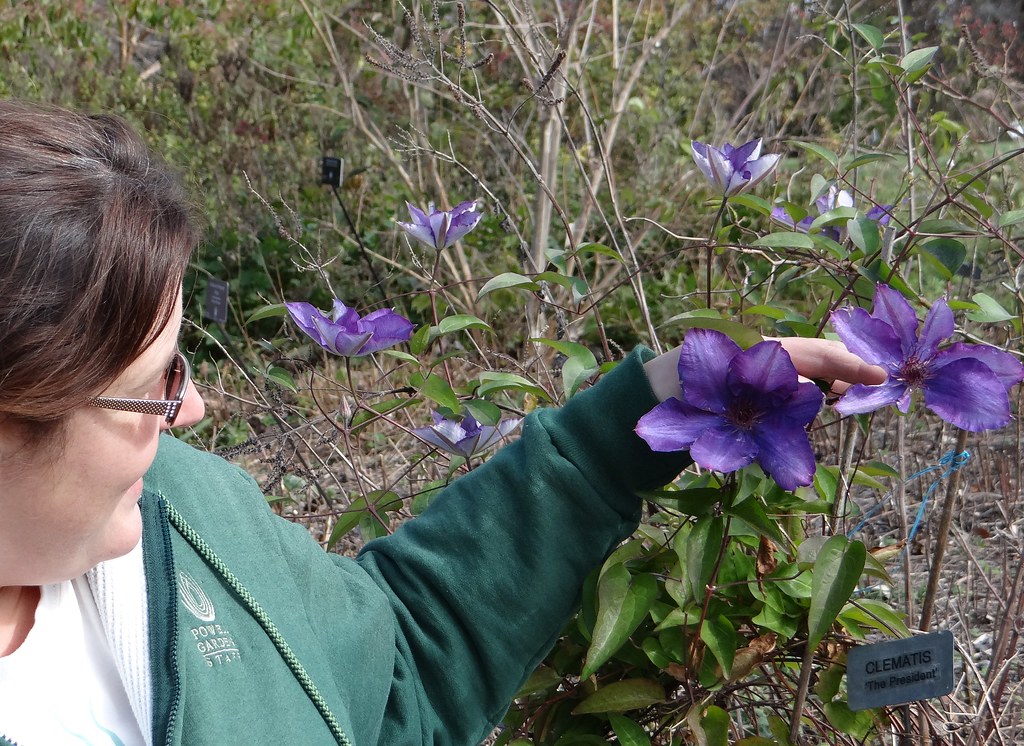
This weird season after such a dry summer has made many plants bloom out of sequence. Here Jennifer Barnes admires a 'The President' Clematis blooming in the Perennial Garden. These flowers withstood 27F without any damage! Is this a subliminal message to get out and VOTE next week?

Ornamental grasses like this 'Desert Plains' Fountain Grass (Pennisetum alopecuroides) in the Perennial Garden clearly express the season with their beautiful seedheads.

Here is stunning 'Sioux Blue' Indiangrass (Sorghastrum nutans) beautifully backlit with 'Raydon's Favorite' Asters (Aster oblongifolius) in the foreground and a dark backdrop of our tapestry hedge. We usually don't cut down our ornamental grasses until late winter or early spring to allow for their beauty to shine all winter.
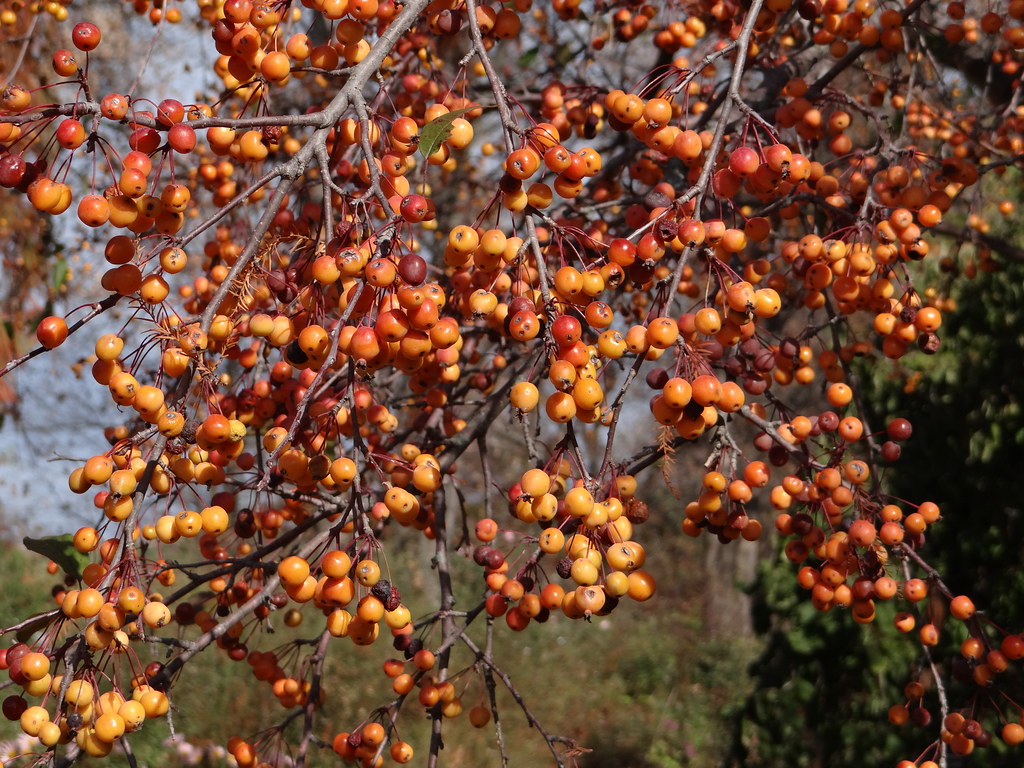
Some of the most ornamental fruit now are the crabapples (Malus hybrids). This is the 'Indian Magic' Flowering Crabapple's fruit in the Perennial Garden. It makes such a warm and seasonal display in the garden now and will be a feast for songbirds through winter.
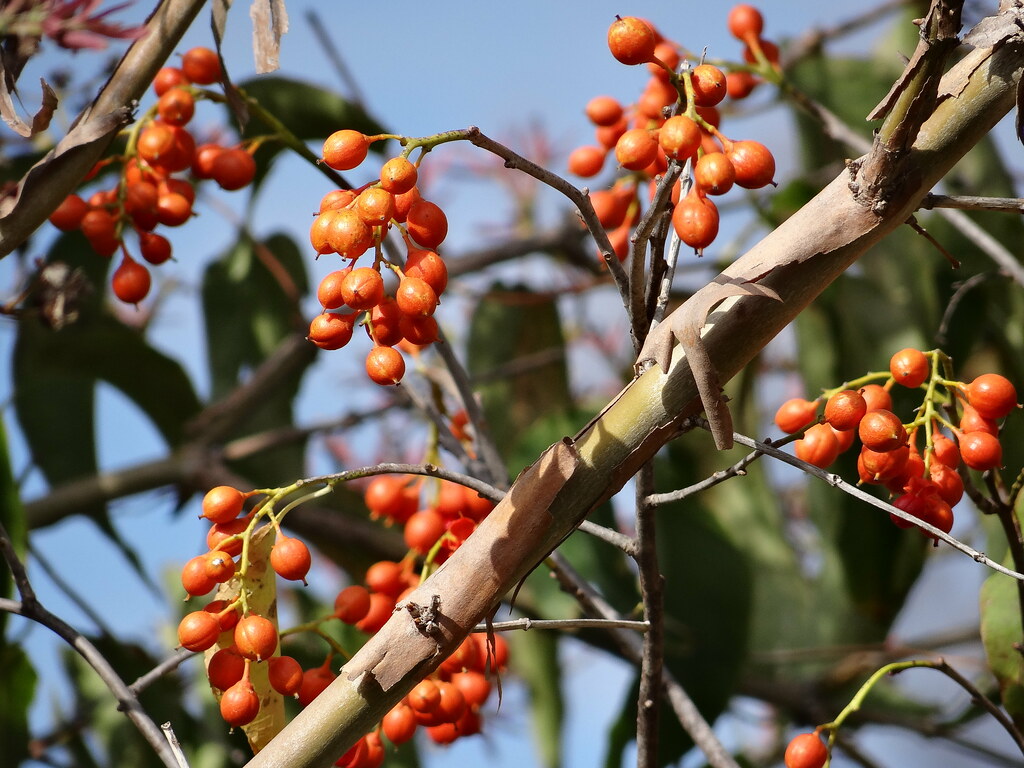
We were thrilled to discover a surprise American Bittersweet (Celastrus scandens) vine climbing in our largest Seven Sons tree in the Perennial Garden. The birds planted this one and we are lucky it was a girl so it can show this colorful fruit (not yet popped open to reveal scarlet berries inside the orange husk). Yes, we embrace many of nature's changes in the garden and we will NOT remove this vine.
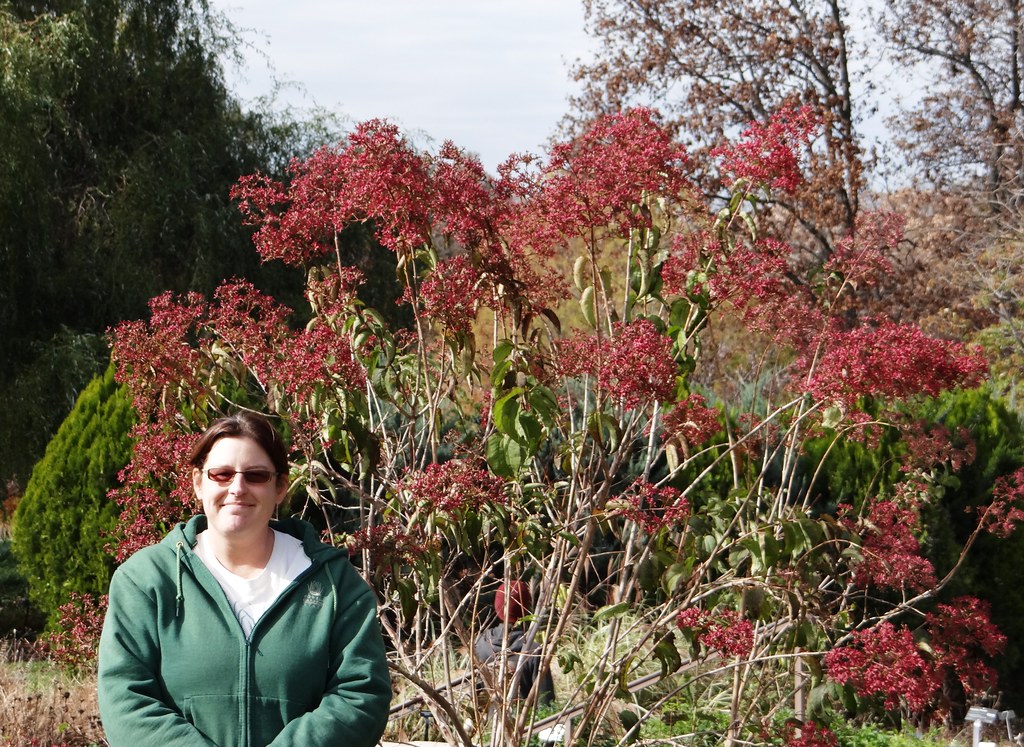
Here, Jennifer poses with our younger Seven Sons tree (Hepatcodium miconioides) which is in its pink, post bloom stage. The pink color is the fruit, actually the left over flower calyxes attached to the fruit. Seven Sons blooms white in September and is one of our best early fall flowering trees, attracting a wealth of pollinators and butterflies. It will grow 15 to 20 feet tall at maturity and the Greater Kansas City champion is at the Kauffman Memorial Garden.

Most trees are in fall color or past peak. Trees that are broad-leaved and still green are usually species from Europe or Asia now. The green tree above is a Sawtooth Oak (Quercus acutissima) from Asia. The tree on the lake edge in rust is a Baldcypress and the trees holding earthy tan foliage are Swamp White Oaks. Many of our oaks hang on to their "dead" leaves which are called marcescent foliage. Baldcypress are one of our few deciduous conifers with needle leaves that turn beautiful rust shades in late fall and drop. Every year we get comments from visitors that our pine is dying and we have to let them know it is the BALDcypress, aptly named as it is bald in winter.
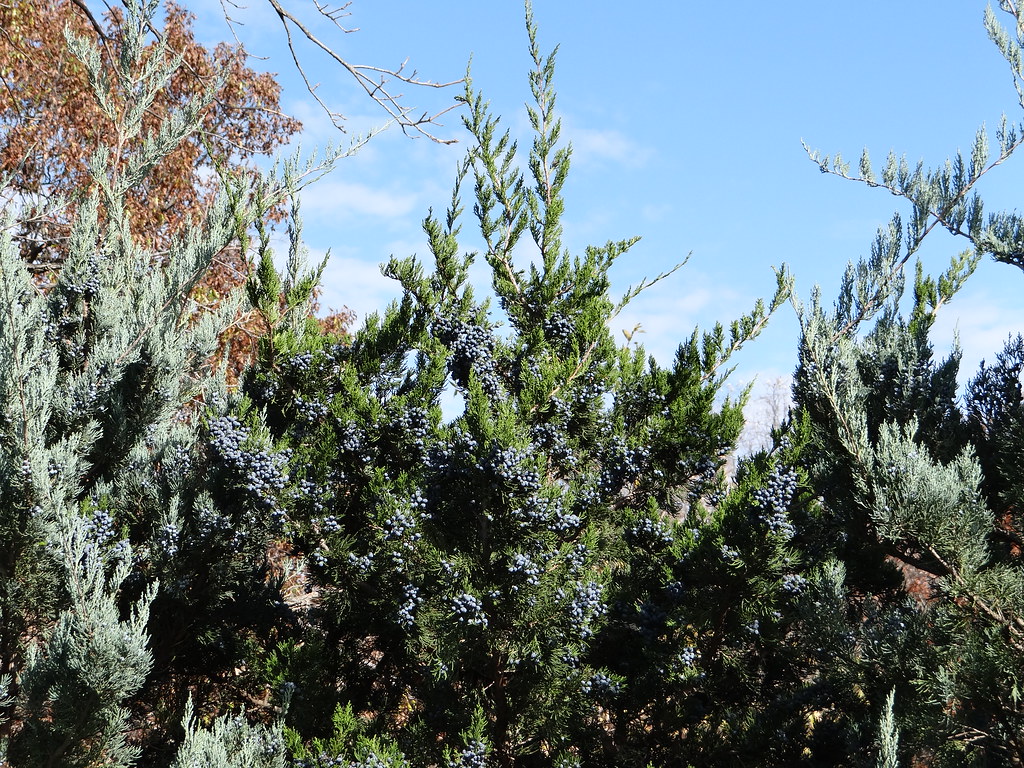
Evergreens do keep their foliage all season and many are simply stunning now including this image from the Perennial Garden's tapestry hedge. The center "green" evergreen is an 'Emerald Sentinel" Juniper (Juniperus virginiana) which is just a selection of our native Eastern Redcedar that is columnar in form with foliage that stays truer green in winter. On either side are "blue" needled selections of the native Eastern Redcedar "Glauca" junipers. All these are female selections so are studded now with blue "berries" which are actually modified cones.
From late fall flowers, to colorful leaves, and berries; the gardens are sure beautiful right now. Come out and experience this season while it lasts: the weekend looks to be mild so come enjoy a walk through the gardens in the crisp autumn air.
Thursday, November 1, 2012
Colors of the Late Fall Garden
Posted by
Kansas City's botanical garden
at
10:48 AM
![]()
![]()
Subscribe to:
Post Comments (Atom)


No comments:
Post a Comment